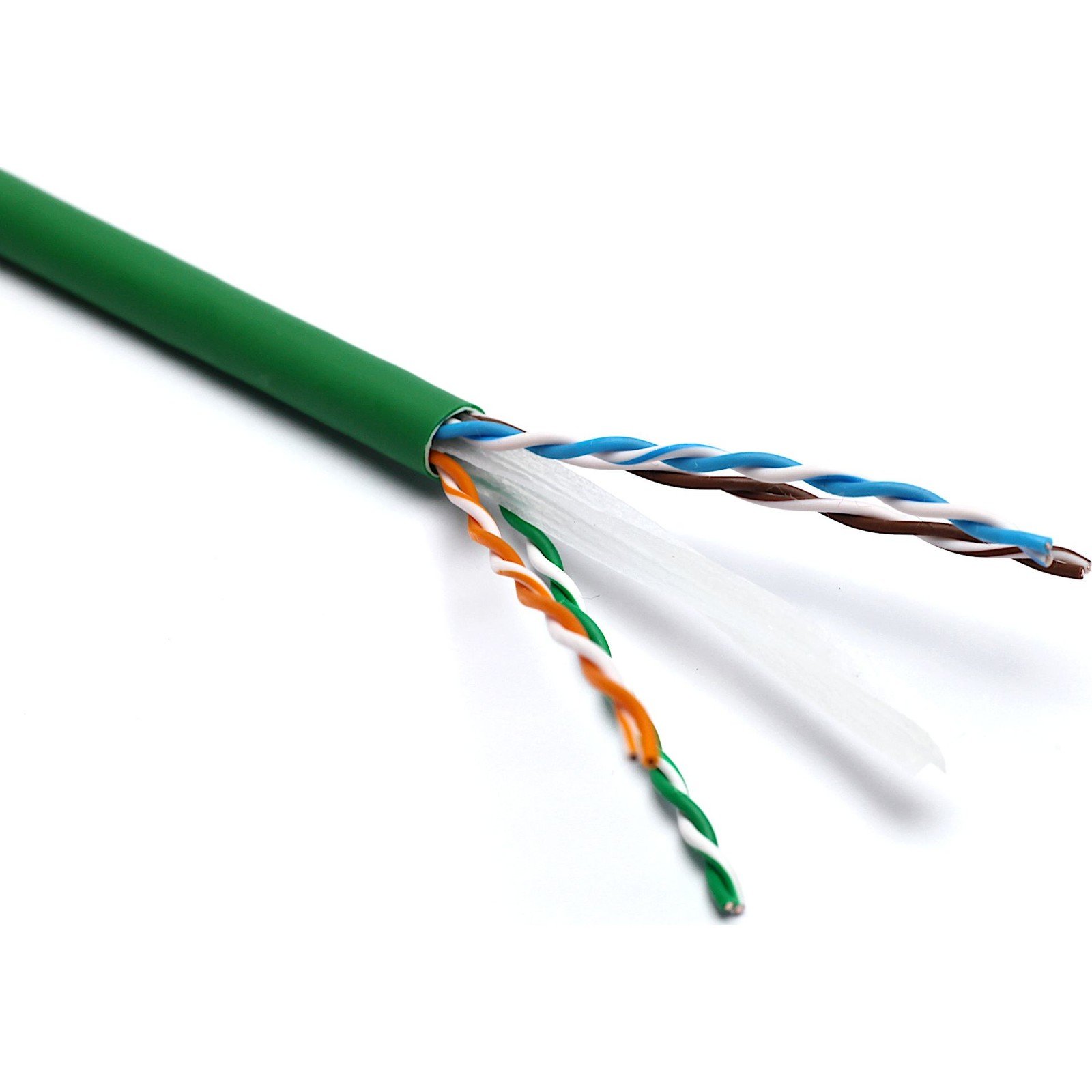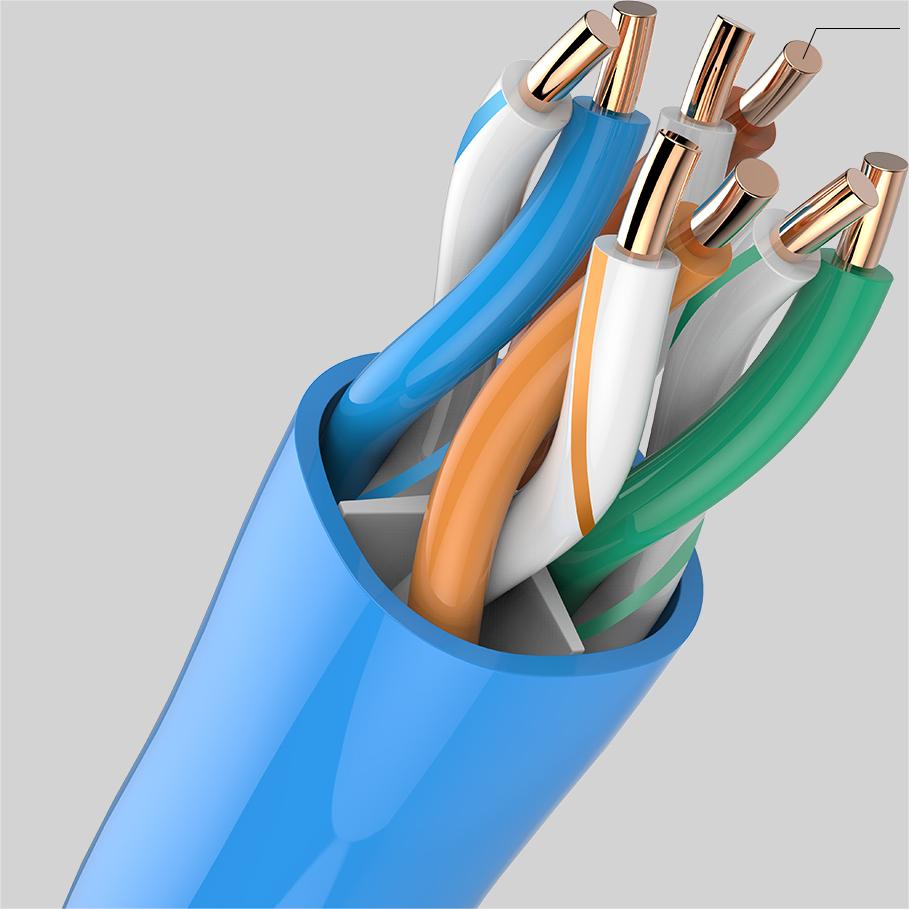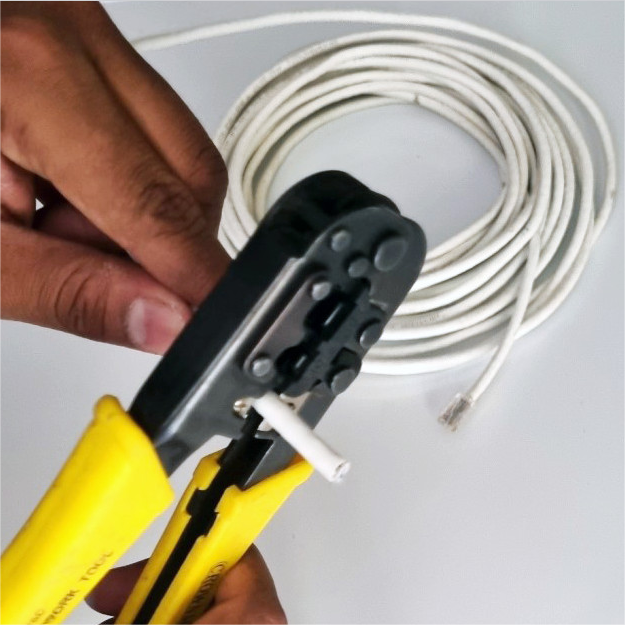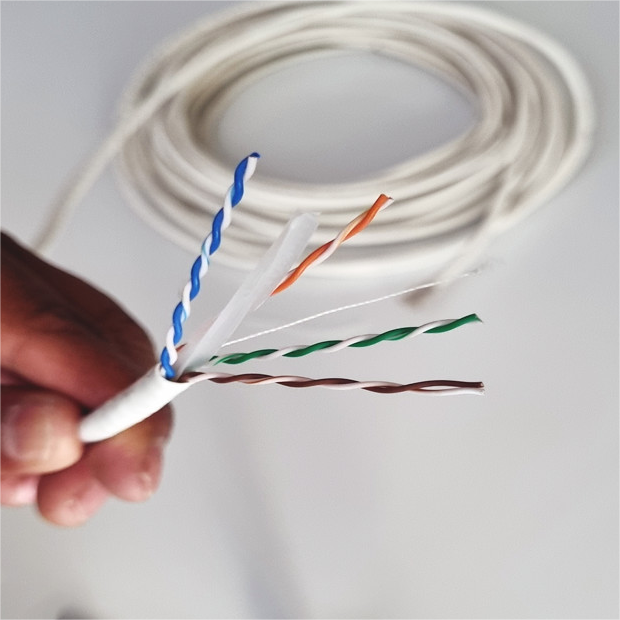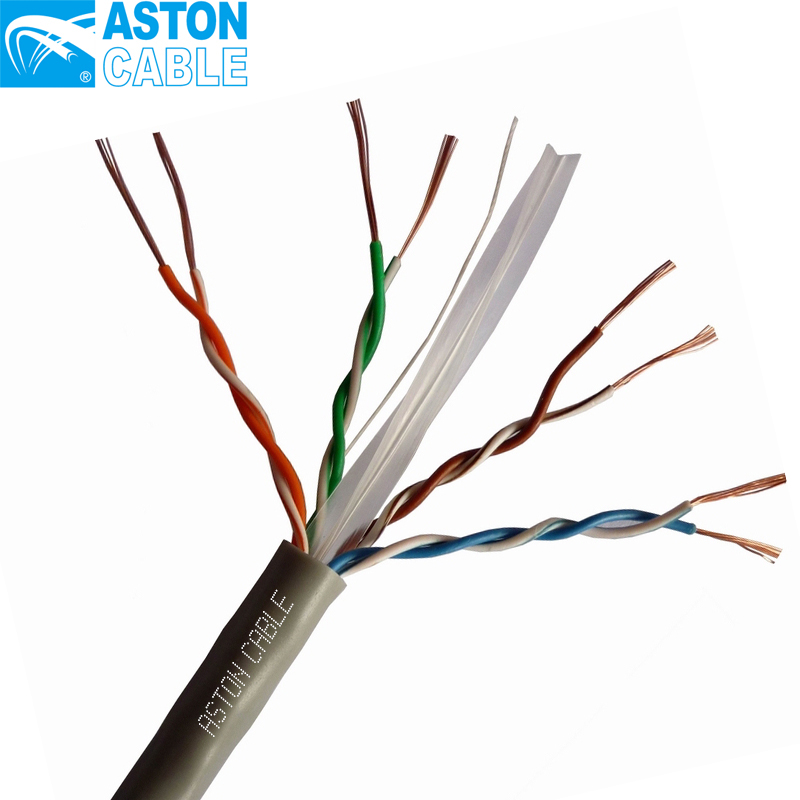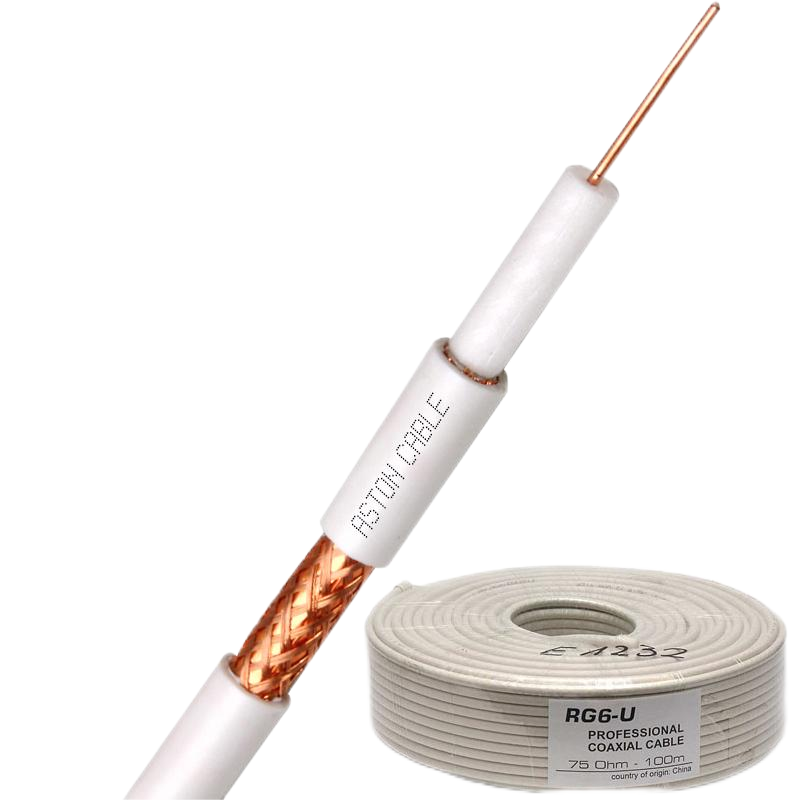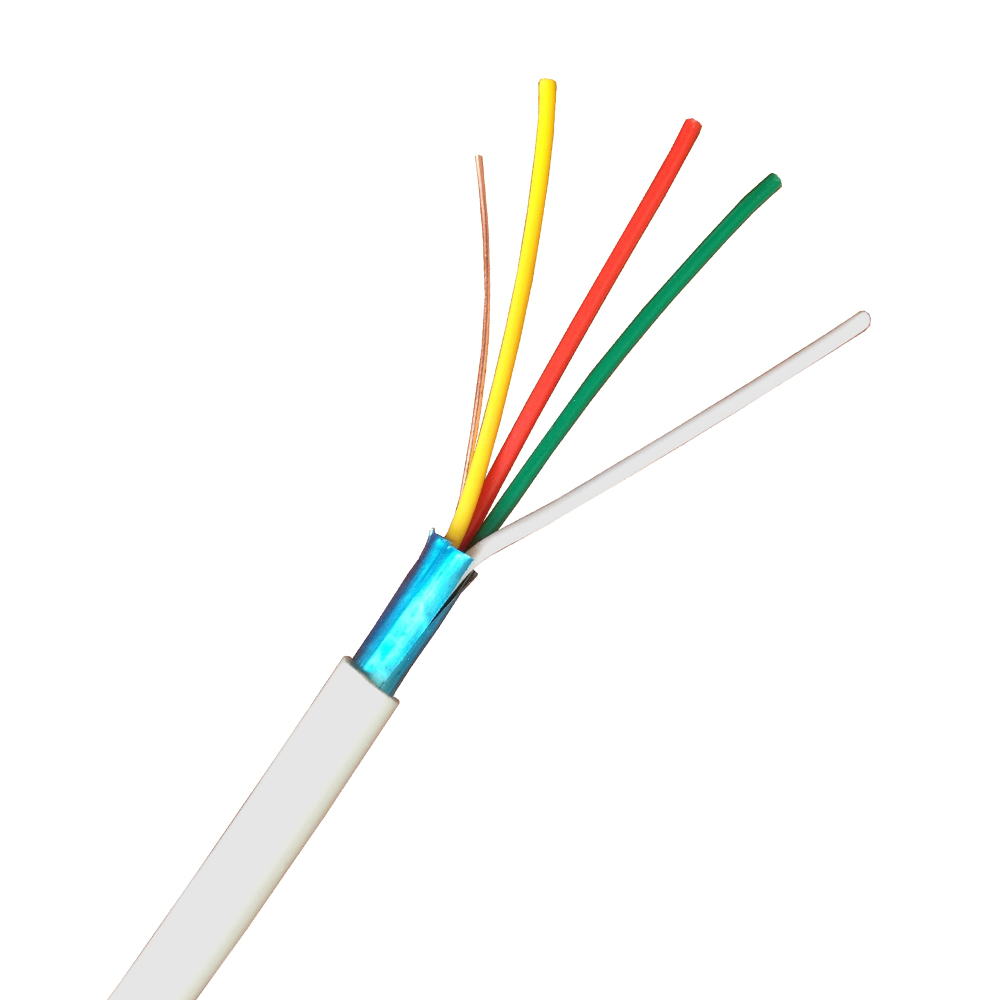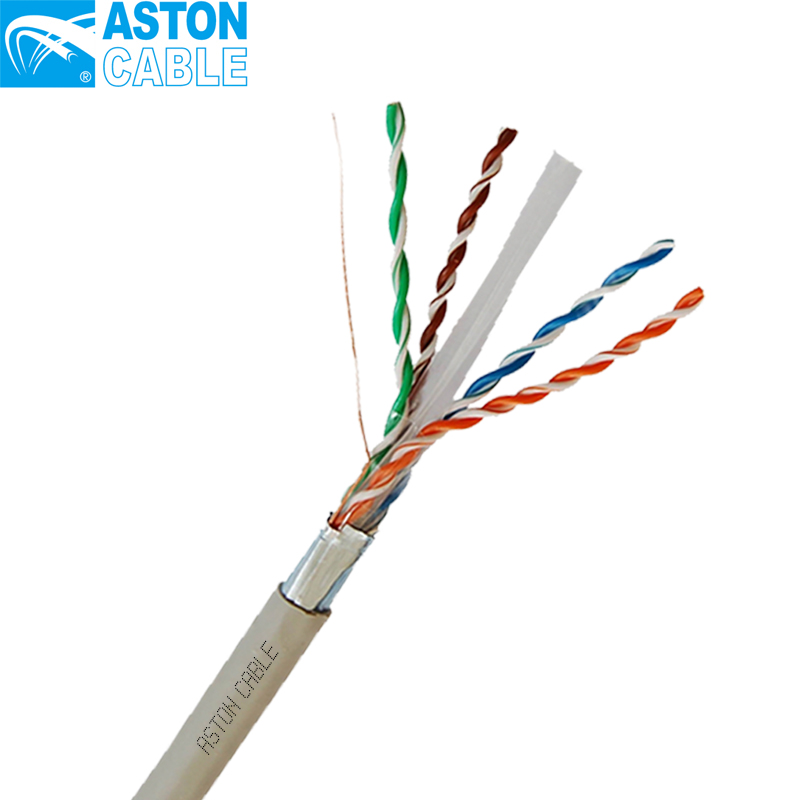Product Main Parameters
| Parameter | Specification |
|---|---|
| Conductor | Bare Copper 23AWG |
| Frequency | 250 MHz |
| Shielding | UTP/FTP/SFTP |
| Jacket Material | PVC, LSZH, PE |
| Compliance | CE, RoHS, ISO9001, IEC |
| Length | 305m per roll |
Common Product Specifications
| Specification | Details |
|---|---|
| Frequency | Supports up to 250 MHz |
| Application | 10BASE-T, 100BASE-TX, 1000BASE-T, 10GBASE-T |
| Shielding | Available in UTP, FTP, SFTP |
| Cable Construction | Twisted Pair with optional spline |
Product Manufacturing Process
The manufacturing process of Cat6 cables involves precise engineering and stringent quality checks to ensure consistent performance and reliability. The process starts with selecting high-quality raw materials such as copper for conductors and specialized polymers for insulation and jackets. Advanced wire drawing techniques are used to achieve the 23AWG thickness, ensuring optimal electrical characteristics. The twisted pair technique is employed to minimize crosstalk and electromagnetic interference. Quality control measures, including high-speed testing and verification against industry standards like CE and RoHS, are integral to the process. This meticulous approach results in wholesale Cat6 cable 23AWG that meets the demands of high-speed networking environments.
Product Application Scenarios
Wholesale Cat6 cable 23AWG is designed for versatile applications in today’s fast-paced networking landscape. It is ideal for both residential and commercial settings, providing reliable connectivity for high-bandwidth applications. In homes, these cables enable seamless streaming and gaming experiences by efficiently supporting multimedia data transfers. In commercial environments, Cat6 cables are indispensable for robust network infrastructures, connecting critical devices such as servers, routers, and switches. Their ability to reduce crosstalk and support high data integrity makes them suitable for data centers and office networks, where uninterrupted and high-speed data flow is crucial. Wholesale Cat6 cable 23AWG is a future-proof choice, accommodating network upgrades to gigabit speeds and beyond.
Product After-Sales Service
We provide comprehensive after-sales service for our wholesale Cat6 cable 23AWG. Our dedicated support team is available to assist with any inquiries or issues, ensuring prompt and effective resolutions. We offer a warranty that covers manufacturing defects and support services to help with installations and technical guidance.
Product Transportation
Our wholesale Cat6 cables are securely packaged for safe transportation, ensuring they arrive in perfect condition. We coordinate with reliable shipping partners to provide timely delivery to locations worldwide, with tracking options available to monitor the shipment status.
Product Advantages
- High Speed and Reliability: Designed to support high-speed data transfer with minimal interference.
- Versatility: Suitable for both home networking and commercial installations.
- Future-Proof: Capable of supporting future network upgrades and technology advancements.
- Quality Materials: Made from premium copper conductors for longevity and performance.
Product FAQ
- What are the main uses of Cat6 cable 23AWG?
Cat6 cable 23AWG is used widely in networking environments for connecting devices such as computers, servers, and routers. It supports high-speed data transfer, up to 10 Gbps over short distances, making it ideal for both residential and commercial installations that require robust bandwidth and reliability.
- Why choose shielded over unshielded Cat6 cables?
Shielded Cat6 cables provide additional protection against electromagnetic interference (EMI) and are recommended for environments with high interference, such as industrial settings. Unshielded cables are generally used in standard office and home environments.
- How does 23AWG thickness affect performance?
The 23AWG thickness of the conductor signifies that the wires are thicker compared to standards like 24AWG used in Cat5e cables. Thicker wires offer reduced resistance and crosstalk, leading to enhanced performance and reliability over longer distances.
- Can Cat6 cable 23AWG be used for outdoor installations?
Yes, Cat6 cables with appropriate jacket materials, such as PE or LSZH, can be used for outdoor installations, offering protection against environmental factors like moisture and UV exposure. Always ensure proper installation techniques to maintain performance.
- What is the maximum cable length for Cat6?
Cat6 cables can support up to 1 Gbps over 100 meters (328 feet) and 10 Gbps over shorter distances up to 55 meters (180 feet). Beyond these lengths, signal quality may degrade, affecting performance.
- How is Cat6 different from Cat5e?
Cat6 offers higher bandwidth (up to 250 MHz) compared to Cat5e (up to 100 MHz), supporting higher data transfer rates and reduced crosstalk. This makes Cat6 ideal for environments requiring faster, more reliable connections.
- What types of jackets are available for Cat6 cable 23AWG?
Cat6 cable jackets are available in various materials, including PVC for indoor use, LSZH for low smoke and halogen-free environments, and PE for outdoor applications. Each material offers specific benefits based on the installation environment.
- Can Cat6 cables be used for PoE applications?
Yes, Cat6 cables can support Power over Ethernet (PoE) technologies, allowing them to deliver both data and power to devices like IP cameras and wireless access points, streamlining installations and reducing the need for separate power supplies.
- Are there any installation tips for Cat6 cables?
When installing Cat6 cables, avoid sharp bends and over-tightening cable ties as these can impact the cable's performance. Maintain a safe distance from sources of EMI to ensure optimal data transfer and minimize interference.
- How does Cat6 cable ensure future-proofing for networks?
Cat6 cables support advanced speeds and bandwidth capabilities, handling future network upgrades with ease. This makes them a long-term investment for both residential and commercial settings, accommodating evolving networking needs.
Product Hot Topics
- Choosing the Right Cat6 Cable for Your Network Needs
When selecting wholesale Cat6 cable 23AWG, consider your specific networking requirements. Evaluate factors like bandwidth demand, environmental conditions, and potential electromagnetic interference. For installations in high-interference environments, shielded cables are recommended. To future-proof your network, choose cables that can handle potential upgrades to Gigabit speeds. Understanding these aspects will help in choosing the right cable for robust performance.
- Installation Best Practices for Cat6 Cable
Proper installation is crucial for maintaining the performance of Cat6 cable 23AWG. Ensure minimal bending radius to avoid signal degradation and follow the recommended distance from power cables to reduce EMI. Use cable management systems to maintain organization and reduce stress on the cables. These practices help achieve optimal network performance, ensuring high-speed data transmission across your networking infrastructure.
- Comparing Cat5e and Cat6 Cables
While both Cat5e and Cat6 cables support Gigabit Ethernet, Cat6 offers higher frequency (up to 250 MHz compared to 100 MHz for Cat5e) and reduced crosstalk. This makes Cat6 more suitable for environments requiring high data integrity and speed. Choosing between them depends on the specific needs of the network and the desired level of future-proofing.
- Advantages of Using Bare Copper in Cat6 Cables
Using bare copper in wholesale Cat6 cable 23AWG enhances conductivity and performance over longer distances. Unlike coated alternatives, which may suffer from increased resistance and signal loss, bare copper ensures consistent data transfer quality. This makes it a preferred choice for high-performance networking solutions, supporting high-speed applications seamlessly.
- The Role of Shielding in Cat6 Cables
Shielding in Cat6 cables plays a vital role in protecting against electromagnetic interference (EMI). For environments with high EMI, such as industrial settings or near electrical equipment, shielded cables like FTP or SFTP are recommended. They ensure stable and reliable data transfer, maintaining the integrity of network communications even in challenging conditions.
- Understanding Ethernet Cable Categories
Ethernet cable categories, from Cat5e to Cat6 and beyond, are designed to meet varied networking demands. Cat6 cables offer improved bandwidth and reduced crosstalk compared to their predecessors, making them suitable for advanced networks. Understanding these categories is essential for making informed decisions about the right cable for your network infrastructure.
- Future-Proofing Your Network with Cat6
Wholesale Cat6 cable 23AWG offers excellent future-proofing capabilities for networks, supporting speeds beyond 1 Gbps and preparing for technological advancements. By investing in Cat6, users can ensure their network infrastructure can accommodate future bandwidth requirements, reducing the need for frequent upgrades.
- Ensuring Compliance with Networking Standards
It's essential to ensure that Cat6 cable installations comply with industry standards such as CE, RoHS, and ISO9001. These standards guarantee the cable's performance, safety, and environmental compliance. Adhering to these standards ensures robust network performance and sustainability, essential for reliable and efficient networking.
- The Impact of Wire Gauge on Cable Performance
Wire gauge, such as 23AWG used in Cat6 cables, affects electrical characteristics like resistance and crosstalk. Lower gauge numbers (thicker wires) provide better conductivity and performance. Understanding the impact of wire gauge helps in choosing the right cables for network installations, ensuring optimal data transmission quality.
- Trends in Networking Cables: Beyond Cat6
As technology advances, new networking cable standards continue to emerge beyond Cat6. These developments aim to support increasing bandwidth demands and higher speeds. Staying informed about these trends helps in planning long-term network infrastructures that can accommodate future technological progress, ensuring sustainable network growth.
Image Description

